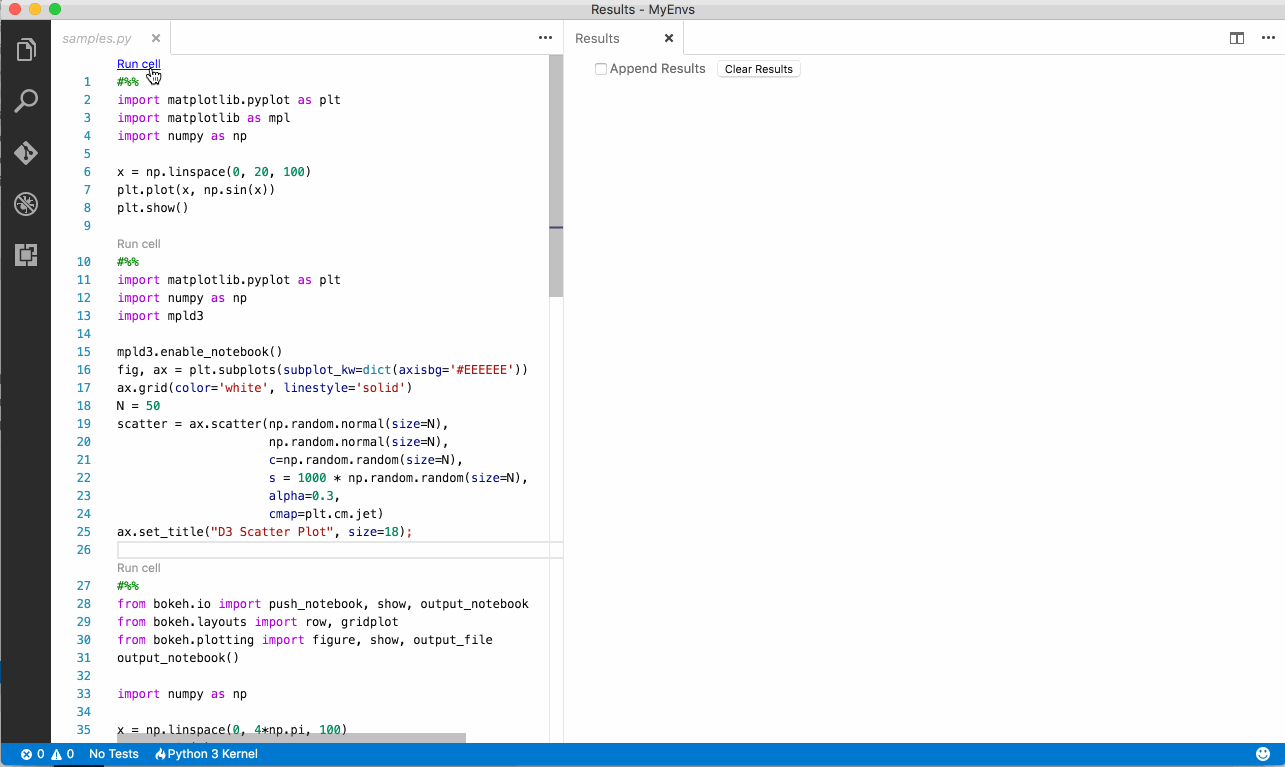This extension is no longer being maintained and all of its functionality has been (or will be) placed into the Microsoft Python extension.
Please download the Microsoft Python Extension instead.
Feel free to submit new issues or feature requests on the Microsoft Python Extension.
An extension with rich support for Jupyter
#%%
import matplotlib.pyplot as plt
import matplotlib as mpl
import numpy as np
x = np.linspace(0, 20, 100)
plt.plot(x, np.sin(x))
plt.show() Run Cell{ "key": "ctrl+enter", "command": "jupyter.execCurrentCell",
"when": "editorTextFocus"
}Try this to connect to a remote Jupyter kernel running on a server, or inside Docker container:
# Generate config file for KernelGateway
jupyter kernelgateway --KernelGatewayApp.generate_config=Truejupyter notebook --generate-config --allow-root
echo -e "c.JupyterWebsocketPersonality.list_kernels = True" >> ~/.jupyter/jupyter_kernel_gateway_config.py echo -e "c.NotebookApp.allow_root = True" >> ~/.jupyter/jupyter_notebook_config.py
1. Start a remote Jupyter Notebook or headless KernelGateway
1. Find the token in the output of the Jupyter server logs: http://jupyter-notebook.readthedocs.io/en/latest/security.html
Then in VS Code:
1. ctrl+shift+p
1. Jupyter: Enter the url of local/remote Jupyter Notebook
1. Select existing kernels from the drop-down list, or start a new kernel
1. Select language for the kernel from drop-down list: e.g., "Python 3"
## [Documentation](https://github.com/DonJayamanne/vscodejupyter/wiki)
For further information and details continue through to the [documentation](https://github.com/DonJayamanne/vscodejupyter/wiki).
## [Issues, Feature Requests and Contributions](https://github.com/DonJayamanne/vscodejupyter/issues)
* Contributions are always welcome. Fork it, modify it and create a pull request.
* Any and all feedback is appreciated and welcome.
## [Roadmap](https://github.com/DonJayamanne/vscodeJupyter/wiki/Roadmap)
### Version 1.1.3 (5 May 2017)
* Notebook not detected [#46](https://github.com/DonJayamanne/vscodeJupyter/issues/46)
### Version 1.1.2 (24 April 2017)
* Fix high CPU usage [#40](https://github.com/DonJayamanne/vscodeJupyter/issues/40)
### Version 1.1.1 (13 April 2017)
* Bug fix (extension fails to load)
* Increase timeout waiting for Jupyter Notebook to start
### Version 1.1.0 (12 April 2017)
* Preliminary support for older versions of Jupyter Notebook (< 4.2.0)

## Source
[GitHub](https://github.com/DonJayamanne/vscodejupyter)
## License
[MIT](https://raw.githubusercontent.com/DonJayamanne/vscodejupyter/master/LICENSE)